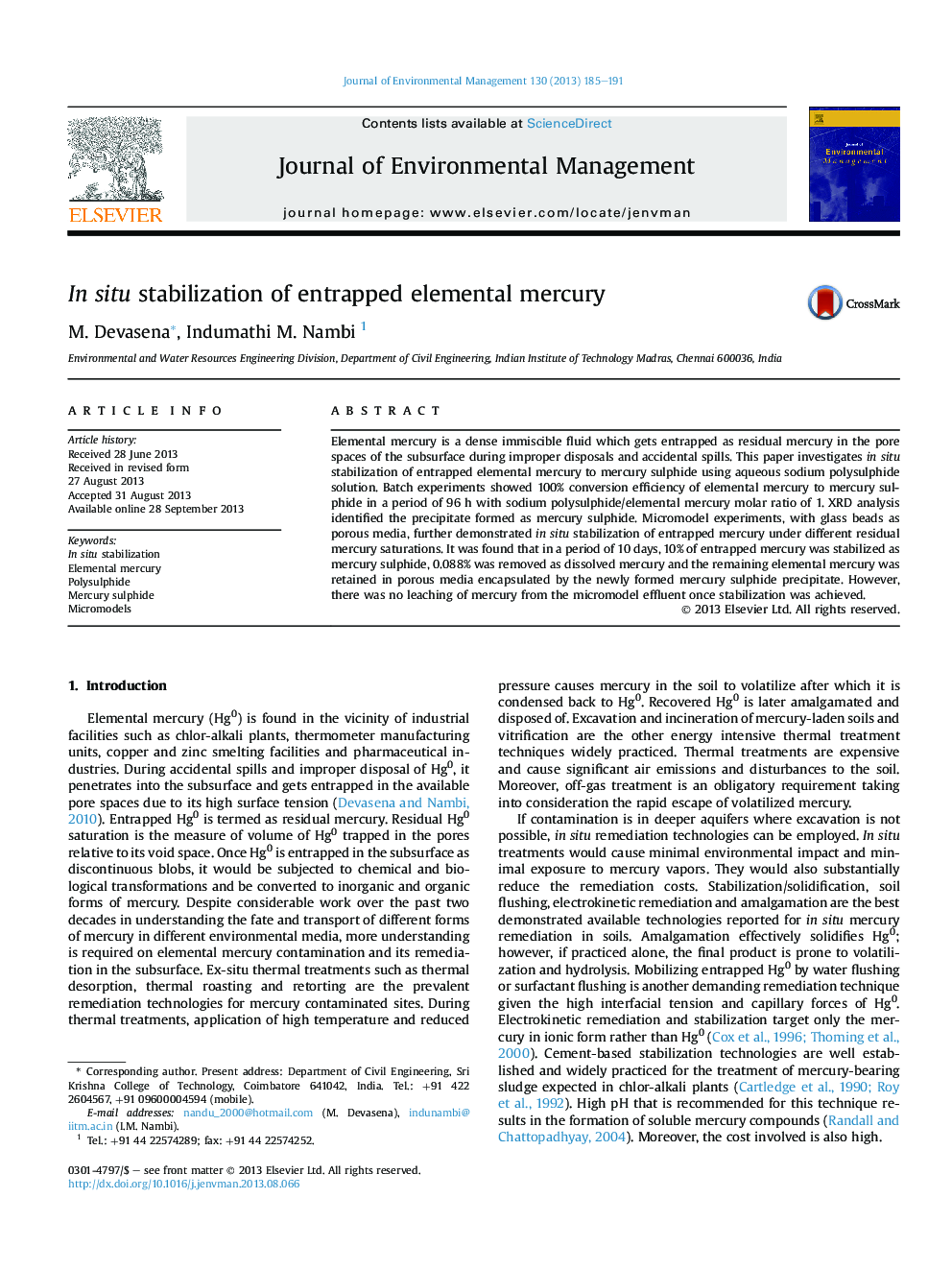| Article ID | Journal | Published Year | Pages | File Type |
|---|---|---|---|---|
| 1056086 | Journal of Environmental Management | 2013 | 7 Pages |
•Elemental mercury was stabilized as mercury sulphide using sodium polysulphide.•Batch experiments showed 100% conversion of elemental mercury to mercury sulphide.•Micromodel experiments were conducted under different residual mercury saturations.•Only 10% of mercury was stabilized as mercury sulphide.•No leaching of mercury was observed after stabilization.
Elemental mercury is a dense immiscible fluid which gets entrapped as residual mercury in the pore spaces of the subsurface during improper disposals and accidental spills. This paper investigates in situ stabilization of entrapped elemental mercury to mercury sulphide using aqueous sodium polysulphide solution. Batch experiments showed 100% conversion efficiency of elemental mercury to mercury sulphide in a period of 96 h with sodium polysulphide/elemental mercury molar ratio of 1. XRD analysis identified the precipitate formed as mercury sulphide. Micromodel experiments, with glass beads as porous media, further demonstrated in situ stabilization of entrapped mercury under different residual mercury saturations. It was found that in a period of 10 days, 10% of entrapped mercury was stabilized as mercury sulphide, 0.088% was removed as dissolved mercury and the remaining elemental mercury was retained in porous media encapsulated by the newly formed mercury sulphide precipitate. However, there was no leaching of mercury from the micromodel effluent once stabilization was achieved.
Graphical abstractFigure optionsDownload full-size imageDownload as PowerPoint slide
